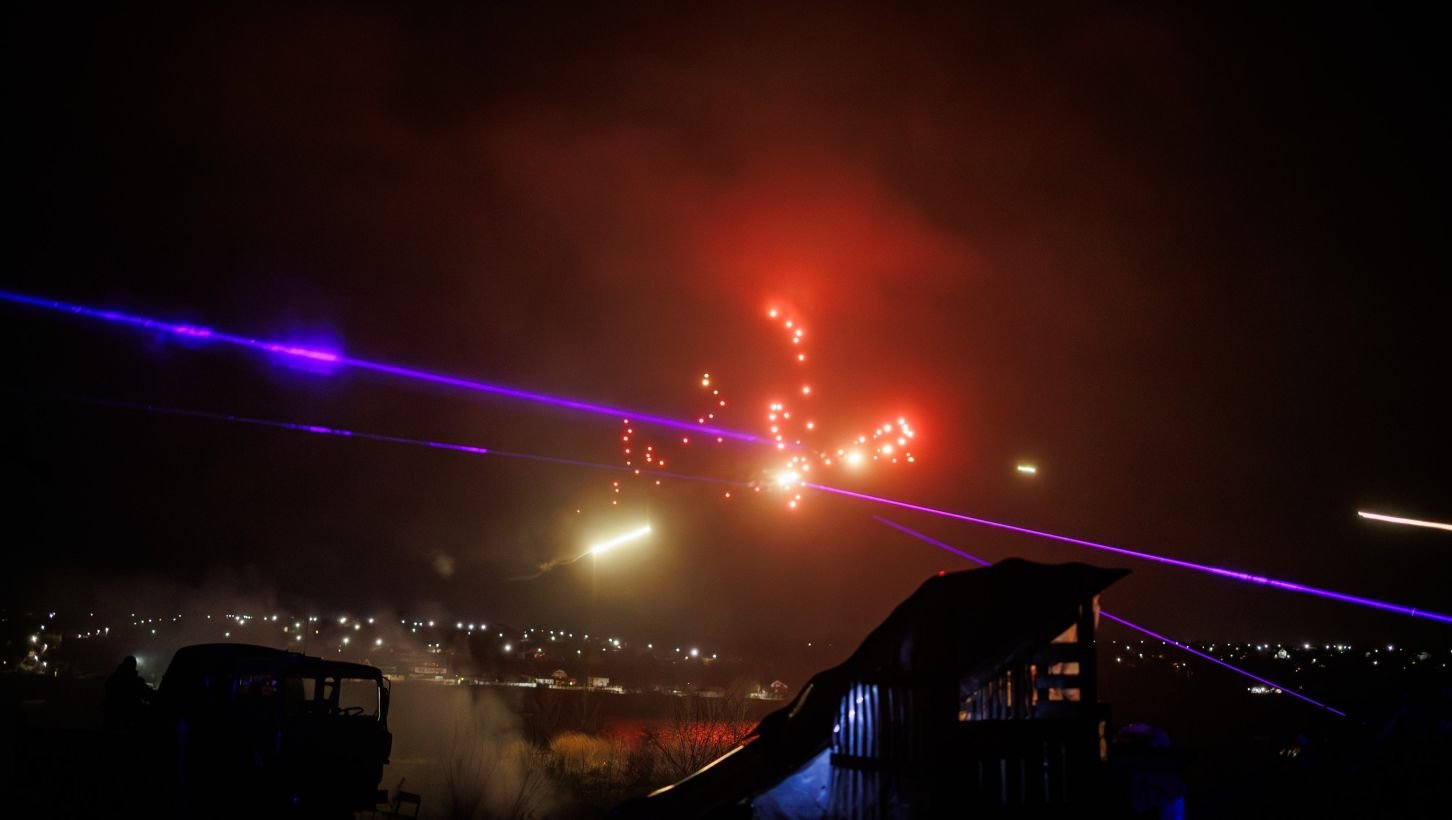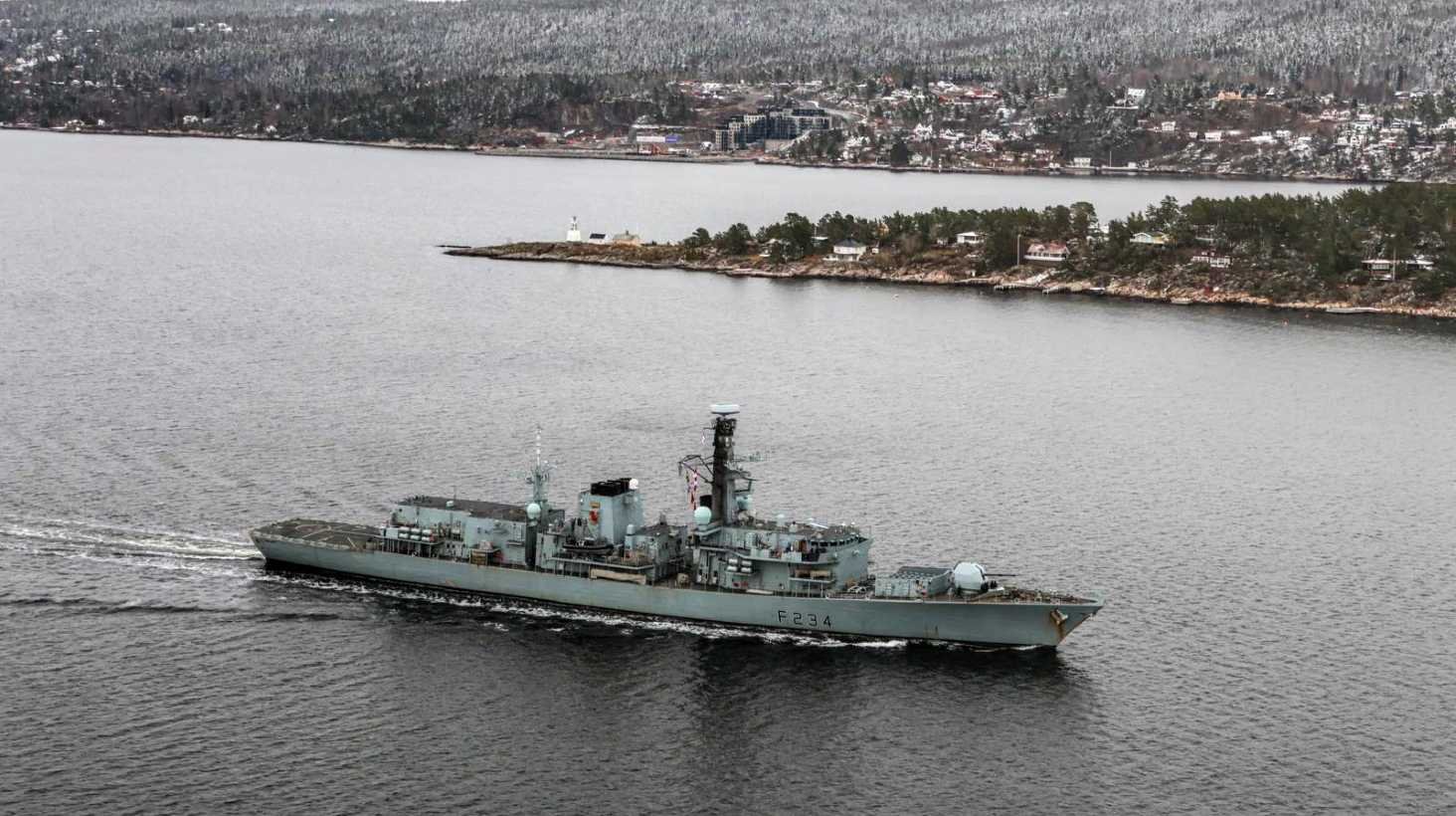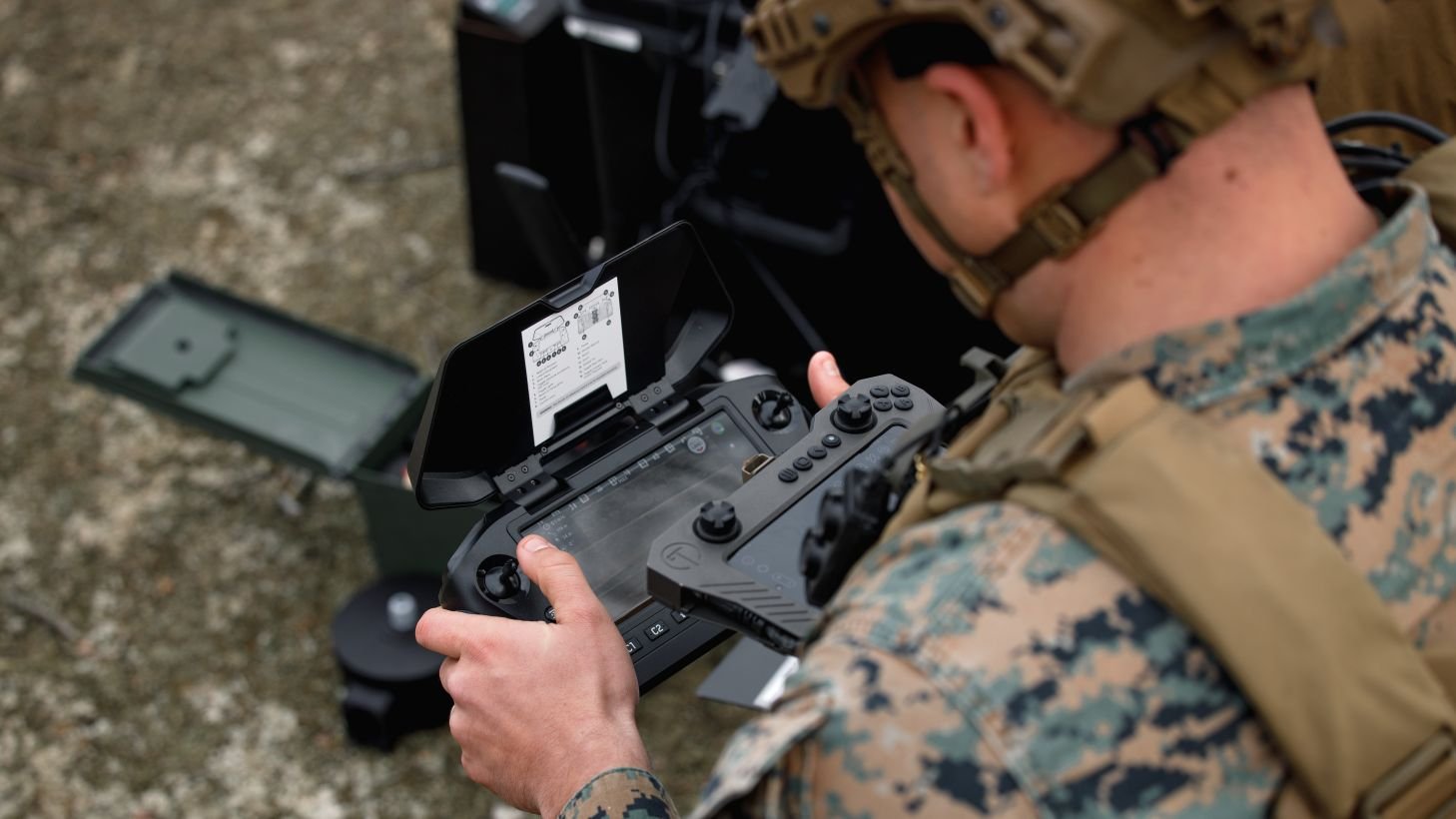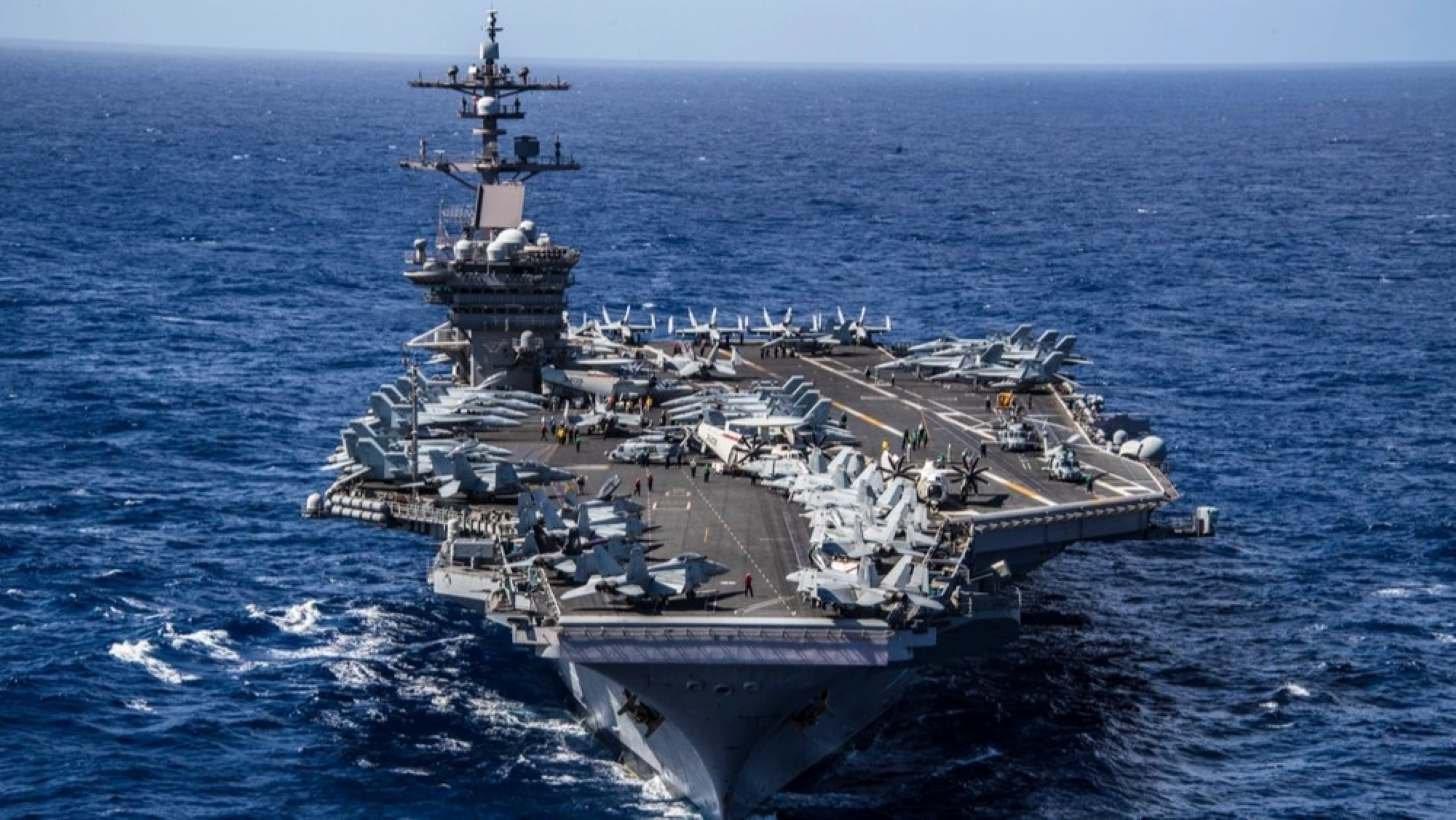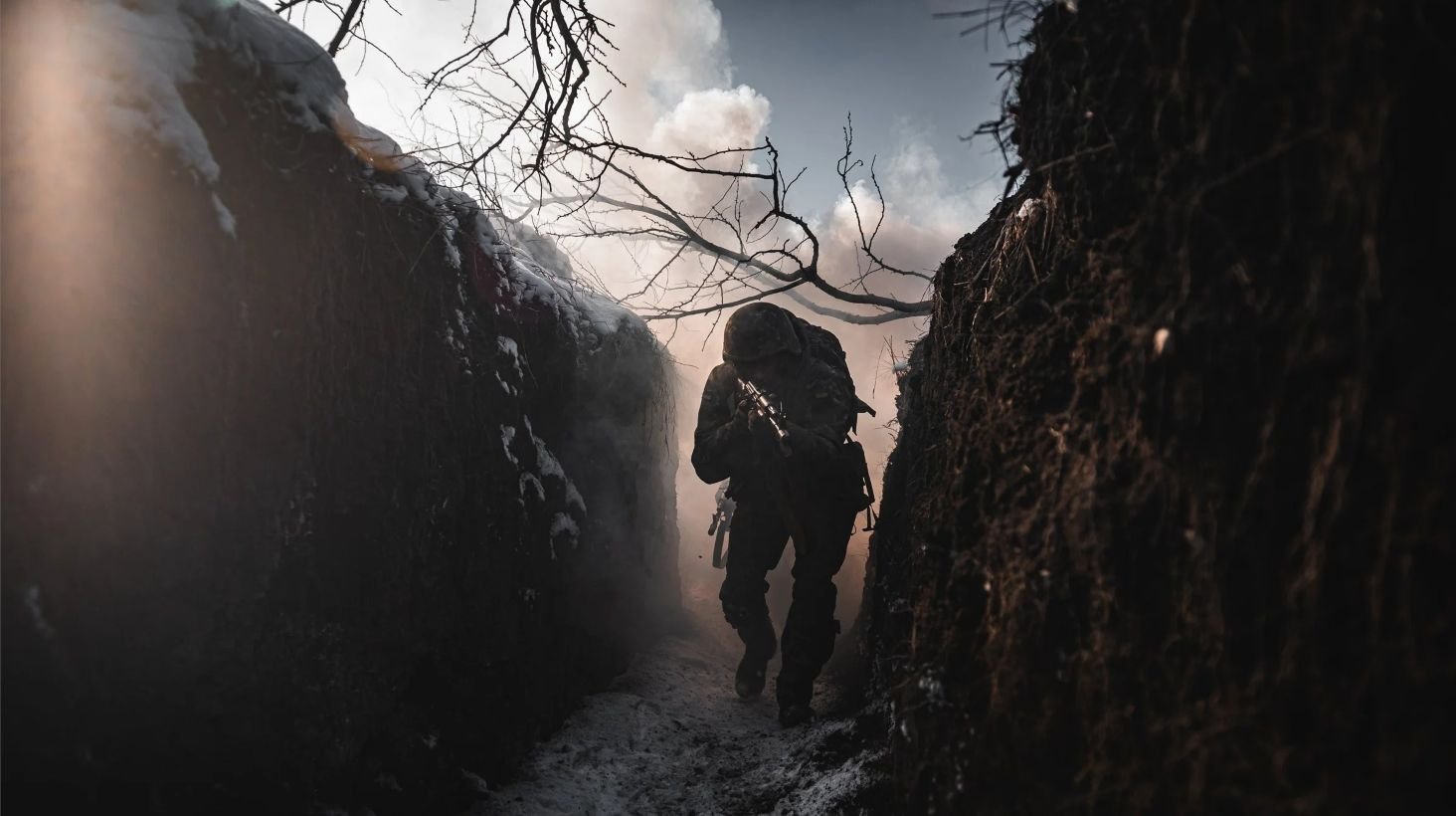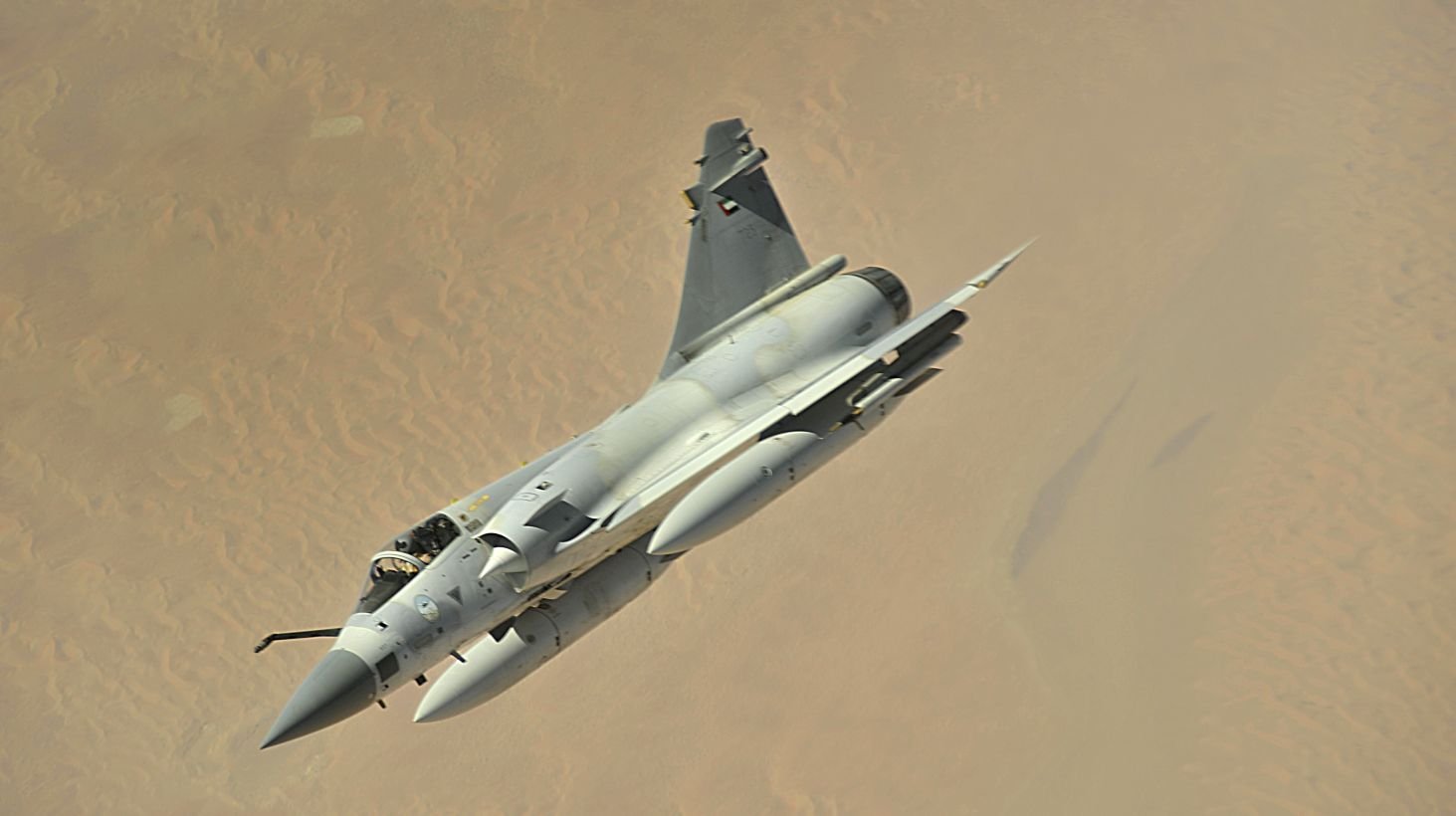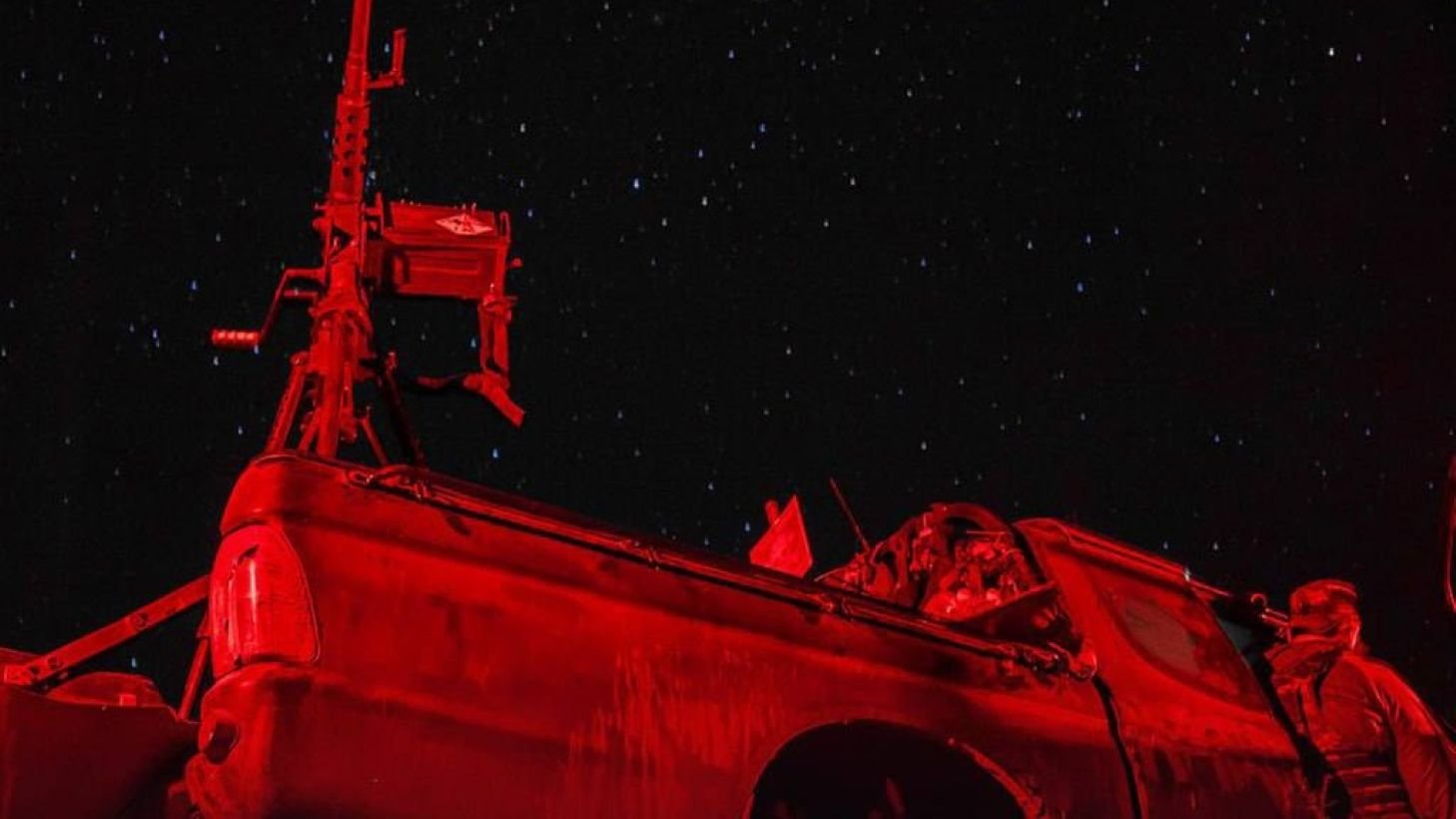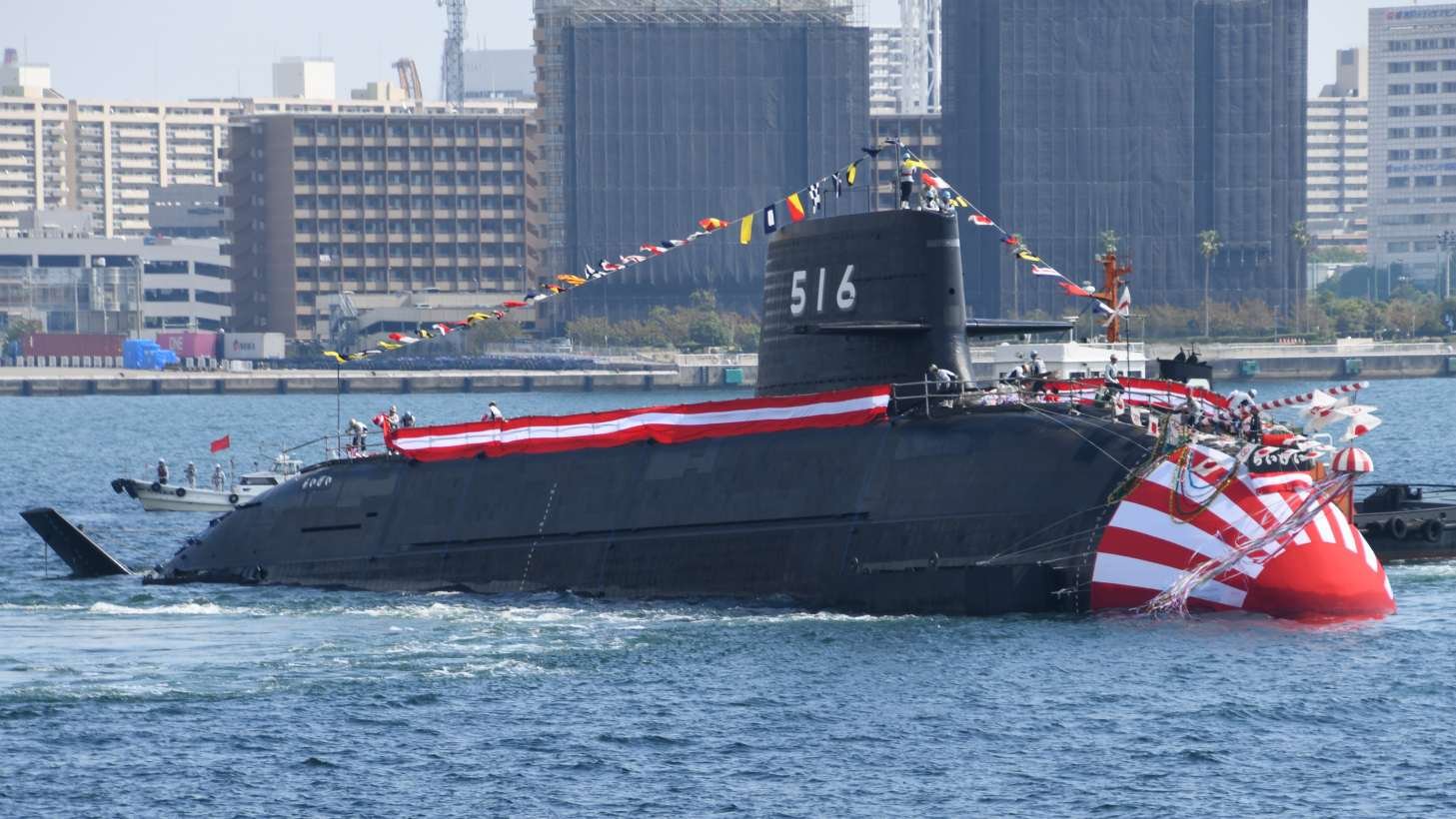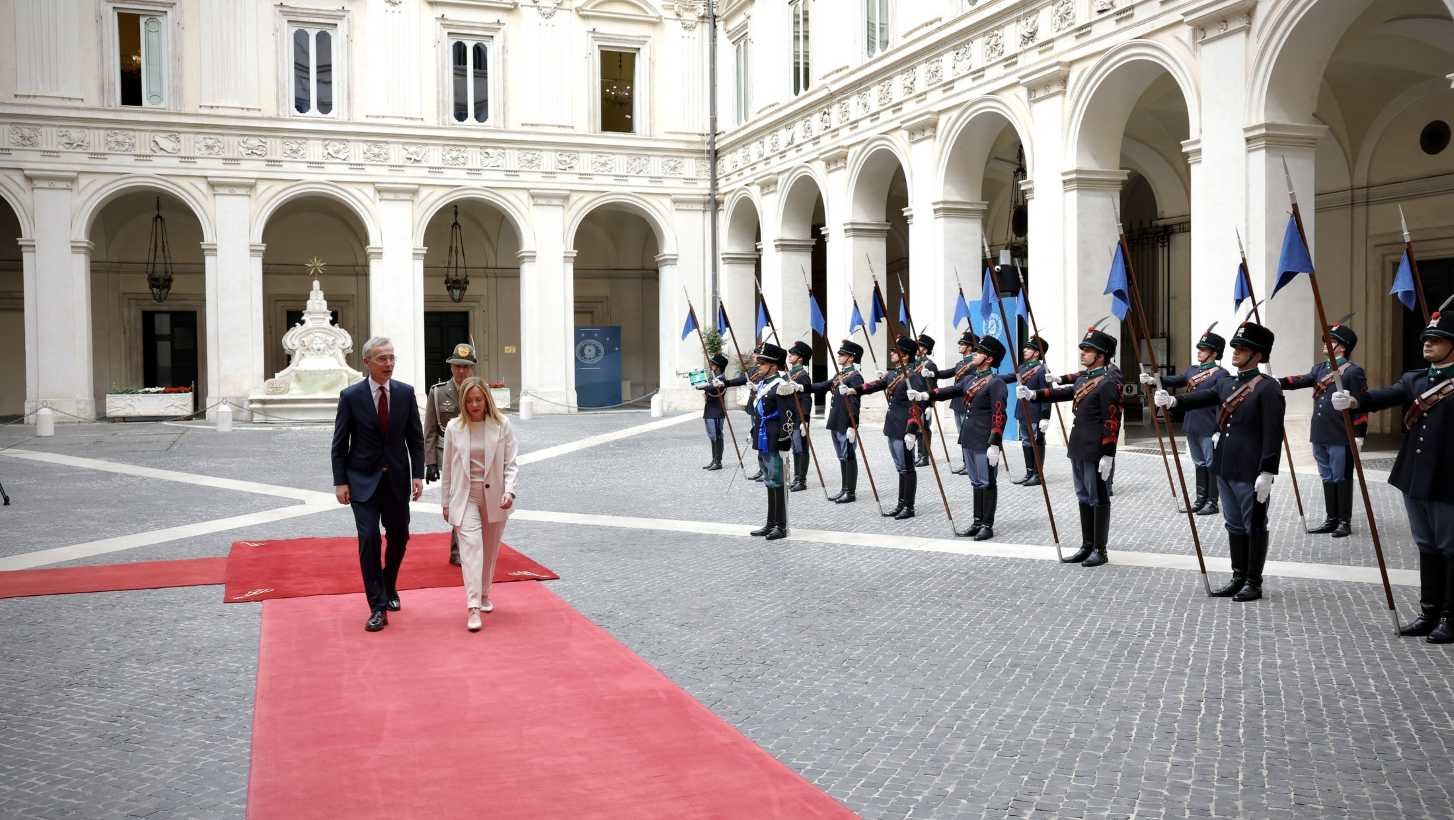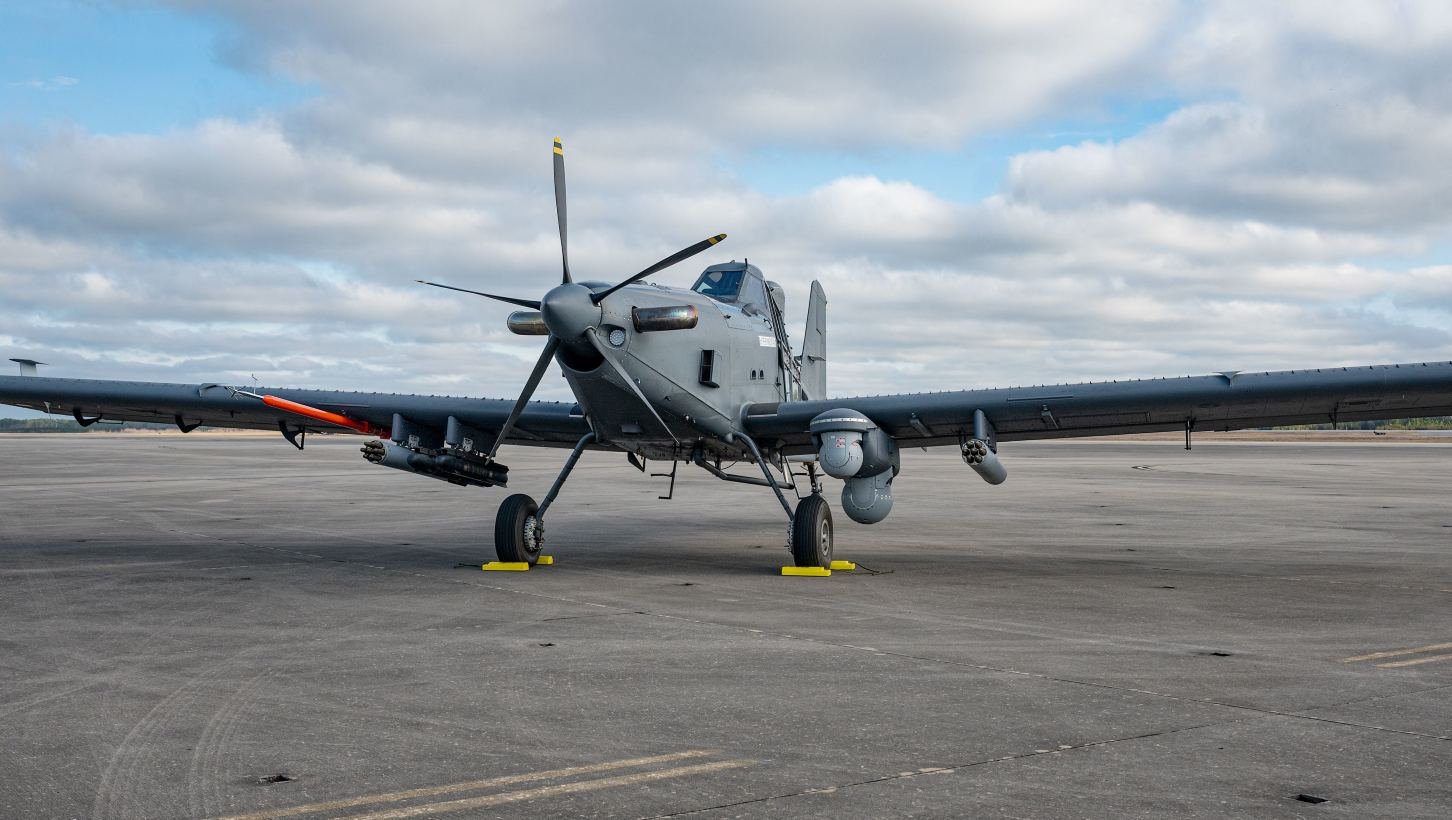-
Posts
790 -
Joined
-
Last visited
Content Type
Profiles
Uncrowned Armory News
Prepping Cookbook
Conspiracy Theories
Uncrowned Tactical Sports News
Prepping
Forums
Events
Everything posted by Uncrowned Guard
-
Trump Proposes Record-Setting $1 Trillion Defense Budget President Donald Trump has recently suggested plans to pass a defense budget that could reach figures around $1 trillion, marking it as the most significant in the history of the United States. The proposed budget speaks to the necessity of reinforcing the military's strength in the face of escalating global threats. While addressing a meeting at the White House with Israeli Prime Minister Benjamin Netanyahu on Monday, the President stated, "We have to be careful about the costs involved, but there's an urgent need to strengthen our military infrastructure due to the presence of numerous dangerous forces worldwide." Trillion Dollar Budget Underway for 2026 Fiscal Year Although an official budget proposal for the 2026 fiscal year is yet to be put forth, indications from the President's statements confirm that the White House is actively considering a considerable hike in defense appropriation, despite the ongoing temporary funding regulations. Full details of the budget plan are anticipated to be revealed by spring. Seconding President Trump's pronouncement, Defense Secretary Pete Hegseth shared on X, "The first TRILLION dollar @DeptofDefense budget is underway. President @realDonaldTrump is on a mission to revamp our military, and that too, rapidly. We are committed to using every cent of taxpayers' money wisely, prioritizing lethality and readiness." Implications and Repercussions of the Proposed Budget Observers believe that the budget might be released in parts, possibly inaugurating with a "bare bones" budget containing only preliminary round figures. The proposition comes while the Department of Defense is undergoing an internal audit aimed at cutting down around $50 billion yearly spending throughout fiscal year 2026 and beyond. Reports suggest that the review might lead to a resource reallocation from long-standing programs to emerging ones, such as space, cyber operations, and force readiness. Concomitantly, the Pentagon is considering reducing its civilian staff by approximately 5% to 8%, suggesting a larger transition in defense strategies under the current administration. However, neither the White House nor the Pentagon has given further comments or additional information regarding the proposed budget increase. View full article
-
- trump
- defense budget
-
(and 3 more)
Tagged with:
-
President Trump Expresses Discontent Over Russian Approach in Ukraine The United States President, Donald Trump, has publicly voiced his dissatisfaction with Russia's intensified military action in Ukraine during an Oval Office interaction with the Israeli Prime Minister, Benjamin Netanyahu, on April 7. Much to his discontent, Trump stated, "I'm not happy about what's going on with the bombing because they're bombing like crazy right now. They're bombing — I don't know what's happening there." These sentiments from the President are not new, as reflected in his comments from April 6, when he expressed his displeasure at the ongoing bombing. Escalation and Fallout Amid Ceasefire Negotiations Among the recent spate of violence is the deadly missile raid on Kryvyi Rih, Ukrainian President Volodymyr Zelensky's birthplace, on April 4. The assault claimed the lives of 20 individuals, including nine children. Two days later, a Russian ballistic missile attack in Kyiv resulted in one death and wounded three other people. On March 11, Ukraine had consented to a full 30-day ceasefire. Russia, however, refused to accede to the truce unless the terms included a reduction in foreign military aid and enforced restrictions on the Ukrainian military operations. Confidence Wavering in Ceasefire Agreement Despite the President’s role as mediator, Trump took no punitive actions in response to Russia's breaches. He stated on April 7 that Moscow had evaded U.S. tariffs because "we're not doing business, essentially, with Russia, because they're at war." NBC News and The Telegraph separately reported that Trump continues to harbor increasing resentment against Russia's unwillingness to de-escalate the conflict. Echoing Trump's initial criticism, the ceasefire agreement experienced limited success during the U.S.-mediated talks in Jeddah on March 11. The discussions resulted in a partial ceasefire focusing on preserving energy infrastructure and security in the Black Sea. However, just two days following the accord, Ukraine accused Russia of breaching the agreement by targeting power facilities in Kherson. While Russia denied these allegations, it also retaliated with a warning that it "reserves the right" to break the deal if Ukraine fails to comply. Consequences of Trade Policies Amid Tensions In the meantime, the US's "Liberation Day" policy announcement imposed tariffs on several major US trading partners, including a 10% tariff on Ukraine. The European Union and China experienced a steeper rise, with rates set at 20% and 54% respectively. However, Russia, Belarus, North Korea, and Cuba were omitted from this list. Despite Trump's continual public disapproval of the violence, he has not yet imposed sanctions or direct measures to pressurize the Kremlin, which constantly conducts offensive operations in Ukraine.
-
President Trump Expresses Discontent Over Russian Approach in Ukraine The United States President, Donald Trump, has publicly voiced his dissatisfaction with Russia's intensified military action in Ukraine during an Oval Office interaction with the Israeli Prime Minister, Benjamin Netanyahu, on April 7. Much to his discontent, Trump stated, "I'm not happy about what's going on with the bombing because they're bombing like crazy right now. They're bombing — I don't know what's happening there." These sentiments from the President are not new, as reflected in his comments from April 6, when he expressed his displeasure at the ongoing bombing. Escalation and Fallout Amid Ceasefire Negotiations Among the recent spate of violence is the deadly missile raid on Kryvyi Rih, Ukrainian President Volodymyr Zelensky's birthplace, on April 4. The assault claimed the lives of 20 individuals, including nine children. Two days later, a Russian ballistic missile attack in Kyiv resulted in one death and wounded three other people. On March 11, Ukraine had consented to a full 30-day ceasefire. Russia, however, refused to accede to the truce unless the terms included a reduction in foreign military aid and enforced restrictions on the Ukrainian military operations. Confidence Wavering in Ceasefire Agreement Despite the President’s role as mediator, Trump took no punitive actions in response to Russia's breaches. He stated on April 7 that Moscow had evaded U.S. tariffs because "we're not doing business, essentially, with Russia, because they're at war." NBC News and The Telegraph separately reported that Trump continues to harbor increasing resentment against Russia's unwillingness to de-escalate the conflict. Echoing Trump's initial criticism, the ceasefire agreement experienced limited success during the U.S.-mediated talks in Jeddah on March 11. The discussions resulted in a partial ceasefire focusing on preserving energy infrastructure and security in the Black Sea. However, just two days following the accord, Ukraine accused Russia of breaching the agreement by targeting power facilities in Kherson. While Russia denied these allegations, it also retaliated with a warning that it "reserves the right" to break the deal if Ukraine fails to comply. Consequences of Trade Policies Amid Tensions In the meantime, the US's "Liberation Day" policy announcement imposed tariffs on several major US trading partners, including a 10% tariff on Ukraine. The European Union and China experienced a steeper rise, with rates set at 20% and 54% respectively. However, Russia, Belarus, North Korea, and Cuba were omitted from this list. Despite Trump's continual public disapproval of the violence, he has not yet imposed sanctions or direct measures to pressurize the Kremlin, which constantly conducts offensive operations in Ukraine. View full article
-
UK Discovers Suspected Russian Spy Sensors in Local Waters The UK military has discovered underwater devices suspected to be Russian spy sensors. According to reports from the Sunday Times, these devices are believed to be focused on the nation's nuclear submarines. The Royal Navy reportedly found multiple devices lodged in the seabed, with several others washed ashore. Intelligence chiefs surmise they were planted to gather data on the UK's four nuclear-armed submarines. The Resurgence of Cold War Incidents The report further hints at a clandestine warfare simmering in the Atlantic. A UK military senior figure informed the press, "This is a game of cat and mouse that has been playing out since the end of the Cold War, and it appears to be gaining heat once again." These revelations emerged as a result of a three-month investigation by the newspaper. Evidence pointed to unmanned Russian devices spotted close to deep-sea communication cables. The report also suggested that superyachts owned by Russian oligarchs could have been employed to carry out reconnaissance missions underwater. The Need for Strengthened Surveillance Former minister Tobias Ellwood alluded to the discovery of these sensors, underscoring the necessity for significant expansion of the UK’s naval surveillance prowess. Ellwood remarked on Britain's need to catch up in keeping tabs on Russia’s subaqueous activities. He accentuated the threat to the nation's security, as 90 per cent of the UK’s data and 60 per cent of its gas is delivered through undersea cables and pipelines, respectively. He posits that the UK could sustain extensive damage through sabotage, which would also be inexpensive and easily deniable. The Times disclosed evidence of "unmanned Russian vehicles" lurking near deep-sea communication cables. It also suggested that British energy and technology companies should collaborate more closely with the military to fortify underwater infrastructure. UK Government's Stance on the Issue The official confirmation of the devices’ existence and their purported function has yet to be ratified by the UK government. Yet, a senior military figure reasserted, “There should be no doubt, there is a war raging in the Atlantic. This is a game of cat and mouse...We are seeing phenomenal amounts of Russian activity.” This report comes on the heels of reports less than two weeks ago of the Royal Navy shadowing three Russian ships through the English Channel. These ships reportedly included an oceanographic survey ship previously suspected of involvement in operations to map Britain’s critical undersea infrastructure. Defending Britain's territorial waters, Defence Secretary John Healey issued a stark warning to the Russian Federation earlier this year, bringing attention to numerous instances of suspicious Russian activities in the region. He sent a potent message to Russian President Vladimir Putin: "We see you."
-
- uk military
- russian spy sensors
- (and 10 more)
-
UK Discovers Suspected Russian Spy Sensors in Local Waters The UK military has discovered underwater devices suspected to be Russian spy sensors. According to reports from the Sunday Times, these devices are believed to be focused on the nation's nuclear submarines. The Royal Navy reportedly found multiple devices lodged in the seabed, with several others washed ashore. Intelligence chiefs surmise they were planted to gather data on the UK's four nuclear-armed submarines. The Resurgence of Cold War Incidents The report further hints at a clandestine warfare simmering in the Atlantic. A UK military senior figure informed the press, "This is a game of cat and mouse that has been playing out since the end of the Cold War, and it appears to be gaining heat once again." These revelations emerged as a result of a three-month investigation by the newspaper. Evidence pointed to unmanned Russian devices spotted close to deep-sea communication cables. The report also suggested that superyachts owned by Russian oligarchs could have been employed to carry out reconnaissance missions underwater. The Need for Strengthened Surveillance Former minister Tobias Ellwood alluded to the discovery of these sensors, underscoring the necessity for significant expansion of the UK’s naval surveillance prowess. Ellwood remarked on Britain's need to catch up in keeping tabs on Russia’s subaqueous activities. He accentuated the threat to the nation's security, as 90 per cent of the UK’s data and 60 per cent of its gas is delivered through undersea cables and pipelines, respectively. He posits that the UK could sustain extensive damage through sabotage, which would also be inexpensive and easily deniable. The Times disclosed evidence of "unmanned Russian vehicles" lurking near deep-sea communication cables. It also suggested that British energy and technology companies should collaborate more closely with the military to fortify underwater infrastructure. UK Government's Stance on the Issue The official confirmation of the devices’ existence and their purported function has yet to be ratified by the UK government. Yet, a senior military figure reasserted, “There should be no doubt, there is a war raging in the Atlantic. This is a game of cat and mouse...We are seeing phenomenal amounts of Russian activity.” This report comes on the heels of reports less than two weeks ago of the Royal Navy shadowing three Russian ships through the English Channel. These ships reportedly included an oceanographic survey ship previously suspected of involvement in operations to map Britain’s critical undersea infrastructure. Defending Britain's territorial waters, Defence Secretary John Healey issued a stark warning to the Russian Federation earlier this year, bringing attention to numerous instances of suspicious Russian activities in the region. He sent a potent message to Russian President Vladimir Putin: "We see you." View full article
-
- uk military
- russian spy sensors
- (and 10 more)
-
Marine Corps Unveils Innovative 'Attack Drone Team' In an action that mirrors the increased global engagement with first-person view (FPV) drone technology and tactics, the Commanding Generals of Training Command, Maj. Gen. Anthony M. Henderson, and the Marine Corps Warfighting Laboratory, Brig. Gen. Simon M. Doran announced the creation of the Marine Corps Attack Drone Team (MCADT) on January 3, 2025. The establishment reflects the Marine Corps' proactive approach to adopting new technological advances in response to evolving threats and shifting battle dynamics, primarily observed in Eastern European conflicts. MCADT: A Strategic Move towards Modern Warfare Expressing the core mission of the MCADT, Maj. Alejandro Tavizon, officer in charge of MCADT and the headquarters company commander at Weapons Training Battalion, stated, "By optimally integrating armed first-person view drones within the Fleet Marine Force (FMF), we aim to enhance our small-unit efficacy and plug the existing gaps in warfighter capabilities. Our commitment is towards adopting emerging technologies and bringing tactical refinement to drone employment, thus enabling Marines to revamp their agility and lethality in the contemporary combat arena." Situated at WTBn-Quantico under Training Command, the MCADT aims to glean expertise from the Marine Corps Shooting Team's illustrious 124-year history. Due to their reputation as authorities in precision weaponry, this symbiotic arrangement will undoubtedly be pivotal in enhancing MCADT's capabilities. MCADT’s Mandate: Enhancing the Warfighting Measures MCADT's primary obligation is to learn from current combat experiences, represent the Marine Corps in inter-Service, national, and international competitions, and, through intensive training sessions, contribute towards crafting state-of-the-art FPV drone capabilities to augment warfighting potency. More specifically, the team's mission includes: Formulating and refining armed FPV drone training for Marines spanning the Total Force. Delivering insights into service-level requisites to expedite the deployment of advanced FPV technologies. Offering hands-on instruction during combative training events to boost individual and unit potency. Looking to the future of the battlefield, Maj. Tavizon underscored the critical role of MCADT. "Our primary objective is to keep pace with the speedily evolving combat terrain. As the Marine Corps Attack Drone Team, we are dedicated to ensuring our warfighters maintain their edge in precision drone employment, thus garnering a crucial advantage in forthcoming conflicts." Striving for Excellence: MCADT at Competitions and Beyond MCADT will serve as the Marine Corps' acknowledged FPV drone employment experts and represent them in inter-service, national, and international competitions. The team plans to partake in the U.S. National Drone Association’s Military Drone Crucible Championship to be held from June 30 to July 3, 2025, in Florida. Here, MCADT will carry out tactical missions by employing FPVs and small unmanned aircraft systems in lifelike scenarios that simulate the conditions of modern warfare. MCADT holds tremendous potential in prompting an exponential leap in combat strategies. The incorporation of FPV drones, whose squad-level lethality extends to 20 kilometers for under $5,000, provides a practical and scalable solution to modern combat necessities. This adoption signals a cost-effective alternative to pricier weaponry systems with lesser functionality. Ongoing Efforts and Future Ambitions MCADT is already deploying several Marine Corps program of record and non-program of record small unmanned aircraft systems and FPV controlled drones, bolstered by the dedicated partnership of the Marine Corps Warfighting Laboratory. With a broad range of capabilities, each of these drones will play a vital role in the successful completion of MCADT’s diverse missions. The establishment of the MCADT signifies a noteworthy evolution in the modernization of Marine Corps capabilities. By arming Marines with cutting-edge drone technology that promotes extended range lethality at a minimal cost, the Corps can position itself at the forefront of modern warfare. Through persistent training, competitions, and collaboration, the MCADT is set to chart the course for the Corps' strategies to defeat national adversaries in the future.
-
- marine corps
- drone unit
-
(and 1 more)
Tagged with:
-
Marine Corps Unveils Innovative 'Attack Drone Team' In an action that mirrors the increased global engagement with first-person view (FPV) drone technology and tactics, the Commanding Generals of Training Command, Maj. Gen. Anthony M. Henderson, and the Marine Corps Warfighting Laboratory, Brig. Gen. Simon M. Doran announced the creation of the Marine Corps Attack Drone Team (MCADT) on January 3, 2025. The establishment reflects the Marine Corps' proactive approach to adopting new technological advances in response to evolving threats and shifting battle dynamics, primarily observed in Eastern European conflicts. MCADT: A Strategic Move towards Modern Warfare Expressing the core mission of the MCADT, Maj. Alejandro Tavizon, officer in charge of MCADT and the headquarters company commander at Weapons Training Battalion, stated, "By optimally integrating armed first-person view drones within the Fleet Marine Force (FMF), we aim to enhance our small-unit efficacy and plug the existing gaps in warfighter capabilities. Our commitment is towards adopting emerging technologies and bringing tactical refinement to drone employment, thus enabling Marines to revamp their agility and lethality in the contemporary combat arena." Situated at WTBn-Quantico under Training Command, the MCADT aims to glean expertise from the Marine Corps Shooting Team's illustrious 124-year history. Due to their reputation as authorities in precision weaponry, this symbiotic arrangement will undoubtedly be pivotal in enhancing MCADT's capabilities. MCADT’s Mandate: Enhancing the Warfighting Measures MCADT's primary obligation is to learn from current combat experiences, represent the Marine Corps in inter-Service, national, and international competitions, and, through intensive training sessions, contribute towards crafting state-of-the-art FPV drone capabilities to augment warfighting potency. More specifically, the team's mission includes: Formulating and refining armed FPV drone training for Marines spanning the Total Force. Delivering insights into service-level requisites to expedite the deployment of advanced FPV technologies. Offering hands-on instruction during combative training events to boost individual and unit potency. Looking to the future of the battlefield, Maj. Tavizon underscored the critical role of MCADT. "Our primary objective is to keep pace with the speedily evolving combat terrain. As the Marine Corps Attack Drone Team, we are dedicated to ensuring our warfighters maintain their edge in precision drone employment, thus garnering a crucial advantage in forthcoming conflicts." Striving for Excellence: MCADT at Competitions and Beyond MCADT will serve as the Marine Corps' acknowledged FPV drone employment experts and represent them in inter-service, national, and international competitions. The team plans to partake in the U.S. National Drone Association’s Military Drone Crucible Championship to be held from June 30 to July 3, 2025, in Florida. Here, MCADT will carry out tactical missions by employing FPVs and small unmanned aircraft systems in lifelike scenarios that simulate the conditions of modern warfare. MCADT holds tremendous potential in prompting an exponential leap in combat strategies. The incorporation of FPV drones, whose squad-level lethality extends to 20 kilometers for under $5,000, provides a practical and scalable solution to modern combat necessities. This adoption signals a cost-effective alternative to pricier weaponry systems with lesser functionality. Ongoing Efforts and Future Ambitions MCADT is already deploying several Marine Corps program of record and non-program of record small unmanned aircraft systems and FPV controlled drones, bolstered by the dedicated partnership of the Marine Corps Warfighting Laboratory. With a broad range of capabilities, each of these drones will play a vital role in the successful completion of MCADT’s diverse missions. The establishment of the MCADT signifies a noteworthy evolution in the modernization of Marine Corps capabilities. By arming Marines with cutting-edge drone technology that promotes extended range lethality at a minimal cost, the Corps can position itself at the forefront of modern warfare. Through persistent training, competitions, and collaboration, the MCADT is set to chart the course for the Corps' strategies to defeat national adversaries in the future. View full article
-
- marine corps
- drone unit
-
(and 1 more)
Tagged with:
-
U.S. Dispatches Additional Naval Carrier Group to Middle East In response to the escalating conflict with the Houthi forces in Yemen, the U.S. military has deployed an additional naval Carrier Strike Group, the USS Carl Vinson, to the Middle East. The Vinson joins the USS Harry S. Truman, thus enhancing the forces currently combating the Houthi insurgency. Expansion of American Naval Presence Amid Renewed Conflict The deployment of the USS Carl Vinson comes as the confrontation with the Houthi rebels, who control much of Yemen, reignites following a pause of about two months. The past week observed heightened tensions and resumed fighting between U.S. forces and the Houthis. According to U.S. military reports, the Vinson and its accompanying ships are scheduled to arrive in the Middle East in about two to three weeks. In line with the U.S. military's strategic goal of increasing its resources in the region, Defense Secretary Lloyd Austin had similarly ordered the augmentation of naval forces to deter potential Iranian attacks against Israel in August. With the USS Carl Vinson's forthcoming arrival, there will be two carrier strike groups in the CENTCOM area of responsibility; an arrangement last observed in September. Enhanced Military Projection and Striking Capabilities The upcoming naval presence, which includes the Vinson Carrier Strike Group comprising a Ticonderoga-class guided-missile cruiser and two Arleigh Burke-class guided-missile destroyers, fosters a heightened ability for prompt action. Notably, the USS Harry S. Truman has been actively engaged in action against the Houthis. Despite a minor collision with a merchant ship requiring a brief hiatus for repairs, the Truman returned to the Red Sea, extending its deployment period. Last week's conflict, according to Pentagon officials, is perceived as "not an endless offensive." Rather, U.S. strikes are considerably targeting a broader range of locations across Yemen than those seen in previous months. While ground forces continue to remain a contested topic, this responsiveness showcases the armed forces' adaptability and flexibility under ever-changing battlefield circumstances. Despite several calls for peace and intermittent ceasefires, the conflict in Yemen continues. However, the U.S. defense sector remains resilient in its commitment to neutralizing perceived threats and ensuring regional stability.
-
- u.s. navy
- middle east
-
(and 3 more)
Tagged with:
-
U.S. Dispatches Additional Naval Carrier Group to Middle East In response to the escalating conflict with the Houthi forces in Yemen, the U.S. military has deployed an additional naval Carrier Strike Group, the USS Carl Vinson, to the Middle East. The Vinson joins the USS Harry S. Truman, thus enhancing the forces currently combating the Houthi insurgency. Expansion of American Naval Presence Amid Renewed Conflict The deployment of the USS Carl Vinson comes as the confrontation with the Houthi rebels, who control much of Yemen, reignites following a pause of about two months. The past week observed heightened tensions and resumed fighting between U.S. forces and the Houthis. According to U.S. military reports, the Vinson and its accompanying ships are scheduled to arrive in the Middle East in about two to three weeks. In line with the U.S. military's strategic goal of increasing its resources in the region, Defense Secretary Lloyd Austin had similarly ordered the augmentation of naval forces to deter potential Iranian attacks against Israel in August. With the USS Carl Vinson's forthcoming arrival, there will be two carrier strike groups in the CENTCOM area of responsibility; an arrangement last observed in September. Enhanced Military Projection and Striking Capabilities The upcoming naval presence, which includes the Vinson Carrier Strike Group comprising a Ticonderoga-class guided-missile cruiser and two Arleigh Burke-class guided-missile destroyers, fosters a heightened ability for prompt action. Notably, the USS Harry S. Truman has been actively engaged in action against the Houthis. Despite a minor collision with a merchant ship requiring a brief hiatus for repairs, the Truman returned to the Red Sea, extending its deployment period. Last week's conflict, according to Pentagon officials, is perceived as "not an endless offensive." Rather, U.S. strikes are considerably targeting a broader range of locations across Yemen than those seen in previous months. While ground forces continue to remain a contested topic, this responsiveness showcases the armed forces' adaptability and flexibility under ever-changing battlefield circumstances. Despite several calls for peace and intermittent ceasefires, the conflict in Yemen continues. However, the U.S. defense sector remains resilient in its commitment to neutralizing perceived threats and ensuring regional stability. View full article
-
- u.s. navy
- middle east
-
(and 3 more)
Tagged with:
-

Russia Leveraging Propaganda to Blame Ukraine, ISW Warns
Uncrowned Guard posted an article in Ongoing Conflicts
Russia Employing Propaganda to Shift War Blame to Ukraine, Warns ISW Russian authorities have been utilizing propaganda narratives to justify the continuation of the current conflict and to undermine ongoing peace discussion, according to a report released by the Institute for the Study of War (ISW) on March 21. The ISW has highlighted Kremlin spokesperson Dmitry Peskov's assertion that the denial of involvement by Ukraine in the fire at the Sudzha gas distribution station was intended to harm Kyiv's credibility. Meanwhile, Russian Foreign Ministry spokesperson Maria Zakharova accused Ukraine of violating an agreement on strikes against energy infrastructures still in negotiation. Zakharova further indicates that the U.S. bears the responsibility to control Ukraine's actions. With these statements, the Kremlin successfully redirects the narrative portraying Ukraine as the transgressor in the ongoing conflict. The narrative was further supported by the accusations made by Russian officials against Ukrainian forces, claiming they targeted Russian nuclear power facilities and committed war crimes against Russian citizens. Furthermore, an account of current investigations into Ukrainian offenses against the Kursk Nuclear Power Plant and civilians in the area was given by Russia’s Investigative Committee on March 21. Neutral Figure Parrots Russian Propaganda Claims U.S. envoy to the Middle East, Steve Witkoff, emerged as a leading figure in the ongoing peace discussions between Russia and the U.S. In a significant development, Witkoff appeared to overtly repeat several of Russia's propaganda claims during an interview with American far-right political commentator Tucker Carlson on March 21. Witkoff's acceptance of Moscow's claims creates further uncertainty as to whether Ukraine can achieve a ceasefire that aligns with its terms. One of Witkoff's statements acknowledges the overwhelming desire of residents in Russia-occupied regions of Ukraine to live under Russian rule. This statement ignores the circumstances surrounding the forced referenda conducted by Russia in occupied parts of Ukraine. UK Intelligence Labels Putin's Decree as Ushering in Russification of Ukrainians In other developments, British intelligence has classified a recent decree signed by Russian President Vladimir Putin as heralding a new phase of the Russification policy in unlawfully occupied regions of Ukraine. The decree demands Ukrainian citizens residing in Russia to obtain Russian documents to leave by September 10. According to the UK intelligence assessment, Putin's decree is a clear ploy to force out Ukrainian nationals from Russian-occupied territories who refuse to accept Russian citizenship. Most importantly, the decree substantiates the accusation against Russia of trying to systematically wipe out Ukrainian culture, identity, and statehood in the occupied territories by forcing the adoption of Russian culture and citizenship. This charge is especially relevant in light of the open adoption of Russian propaganda by key figures such as U.S. envoy Steve Witkoff in recent interviews.-
- russia
- russia ukraine war
-
(and 2 more)
Tagged with:
-
Russia Employing Propaganda to Shift War Blame to Ukraine, Warns ISW Russian authorities have been utilizing propaganda narratives to justify the continuation of the current conflict and to undermine ongoing peace discussion, according to a report released by the Institute for the Study of War (ISW) on March 21. The ISW has highlighted Kremlin spokesperson Dmitry Peskov's assertion that the denial of involvement by Ukraine in the fire at the Sudzha gas distribution station was intended to harm Kyiv's credibility. Meanwhile, Russian Foreign Ministry spokesperson Maria Zakharova accused Ukraine of violating an agreement on strikes against energy infrastructures still in negotiation. Zakharova further indicates that the U.S. bears the responsibility to control Ukraine's actions. With these statements, the Kremlin successfully redirects the narrative portraying Ukraine as the transgressor in the ongoing conflict. The narrative was further supported by the accusations made by Russian officials against Ukrainian forces, claiming they targeted Russian nuclear power facilities and committed war crimes against Russian citizens. Furthermore, an account of current investigations into Ukrainian offenses against the Kursk Nuclear Power Plant and civilians in the area was given by Russia’s Investigative Committee on March 21. Neutral Figure Parrots Russian Propaganda Claims U.S. envoy to the Middle East, Steve Witkoff, emerged as a leading figure in the ongoing peace discussions between Russia and the U.S. In a significant development, Witkoff appeared to overtly repeat several of Russia's propaganda claims during an interview with American far-right political commentator Tucker Carlson on March 21. Witkoff's acceptance of Moscow's claims creates further uncertainty as to whether Ukraine can achieve a ceasefire that aligns with its terms. One of Witkoff's statements acknowledges the overwhelming desire of residents in Russia-occupied regions of Ukraine to live under Russian rule. This statement ignores the circumstances surrounding the forced referenda conducted by Russia in occupied parts of Ukraine. UK Intelligence Labels Putin's Decree as Ushering in Russification of Ukrainians In other developments, British intelligence has classified a recent decree signed by Russian President Vladimir Putin as heralding a new phase of the Russification policy in unlawfully occupied regions of Ukraine. The decree demands Ukrainian citizens residing in Russia to obtain Russian documents to leave by September 10. According to the UK intelligence assessment, Putin's decree is a clear ploy to force out Ukrainian nationals from Russian-occupied territories who refuse to accept Russian citizenship. Most importantly, the decree substantiates the accusation against Russia of trying to systematically wipe out Ukrainian culture, identity, and statehood in the occupied territories by forcing the adoption of Russian culture and citizenship. This charge is especially relevant in light of the open adoption of Russian propaganda by key figures such as U.S. envoy Steve Witkoff in recent interviews. View full article
-
- russia
- russia ukraine war
-
(and 2 more)
Tagged with:
-
Springfield Armory Reveals New Coyote Brown 1911 DS Prodigy Comp 9mm Springfield recently introduced another exciting range of weapons to their ever-growing holster after their successful attendance at the SHOT Show. The newest addition to Springfield Armory's collection is the 1911 DS Prodigy Comp AOS 9mm handgun, now available in the striking Coyote Brown colorway—an exciting notice for fans of 50 Shades of FDE. Choosing the Perfect Model Springfield Armory’s Coyote Brown 1911 DS Prodigy Comp 9mm offers four distinct variations for potential consumers. You can choose between two sizes - 5” and 4.25” models, and two magazine options, Hi-Cap and Lo-Cap, based on local ordinances and personal preferences. Featuring an AOS mounting system allowing compatibility with favorite optics, these variants continue the tradition of the well-loved 1911 ergonomic design. Now available with a unique Coyote Brown twist. Springfield Armory Speaks on the New Addition The Vice President of Marketing for Springfield Armory, Steve Kramer, expressed pride in the new addition. “The 1911 DS Prodigy gives shooters a pistol with the classic appeal of the 1911, but enhanced with a double-stack magazine capacity and modern features.”, says Keramer. The new flat-shooting Coyote Brown Prodigy Comp pistols aim to offer reduced muzzle flip and faster follow-up shots while adding a highly popular color option. Final Considerations The vast offerings from Springfield Armory, ranging from colorways to magazine capacities to barrel sizes - everything caters to the diverse tastes of gun enthusiasts, demonstrating the freedom to personalize. The new 2011-style handguns, including the Coyote Brown 1911 DS Prodigy Comp 9mm pistols, are priced around a reasonable $1,600. Each pistol includes one 17-round and one 20-round magazine, with the possibility to purchase an optional 26-rounder. Both the 5” and the 4.25” models retail for an MSRP of $1,649. Ten-round versions of both models are also accessible in certain locations at the same MSRP. Coyote Brown 1911 DS Prodigy Comp AOS 9mm | PH9119AOSCB-COMP | 706397987435 | MSRP: $1,649 Coyote Brown 1911 DS Prodigy Comp AOS Lo-Cap 9mm| PH9119AOSCBLC-COMP | 706397988012 | MSRP: $1,649 Coyote Brown 1911 DS Prodigy Comp 4.25” AOS 9mm | PH9117AOSCB-COMP | 706397987428 | MSRP: $1,649 Coyote Brown 1911 DS Prodigy Comp 4.25” AOS Lo-Cap 9mm | PH9117AOSCBLC-COMP | 706397988029 | MSRP: $1,649
-
- springfield
- 1911 ds prodigy
-
(and 3 more)
Tagged with:
-
Springfield Armory Reveals New Coyote Brown 1911 DS Prodigy Comp 9mm Springfield recently introduced another exciting range of weapons to their ever-growing holster after their successful attendance at the SHOT Show. The newest addition to Springfield Armory's collection is the 1911 DS Prodigy Comp AOS 9mm handgun, now available in the striking Coyote Brown colorway—an exciting notice for fans of 50 Shades of FDE. Choosing the Perfect Model Springfield Armory’s Coyote Brown 1911 DS Prodigy Comp 9mm offers four distinct variations for potential consumers. You can choose between two sizes - 5” and 4.25” models, and two magazine options, Hi-Cap and Lo-Cap, based on local ordinances and personal preferences. Featuring an AOS mounting system allowing compatibility with favorite optics, these variants continue the tradition of the well-loved 1911 ergonomic design. Now available with a unique Coyote Brown twist. Springfield Armory Speaks on the New Addition The Vice President of Marketing for Springfield Armory, Steve Kramer, expressed pride in the new addition. “The 1911 DS Prodigy gives shooters a pistol with the classic appeal of the 1911, but enhanced with a double-stack magazine capacity and modern features.”, says Keramer. The new flat-shooting Coyote Brown Prodigy Comp pistols aim to offer reduced muzzle flip and faster follow-up shots while adding a highly popular color option. Final Considerations The vast offerings from Springfield Armory, ranging from colorways to magazine capacities to barrel sizes - everything caters to the diverse tastes of gun enthusiasts, demonstrating the freedom to personalize. The new 2011-style handguns, including the Coyote Brown 1911 DS Prodigy Comp 9mm pistols, are priced around a reasonable $1,600. Each pistol includes one 17-round and one 20-round magazine, with the possibility to purchase an optional 26-rounder. Both the 5” and the 4.25” models retail for an MSRP of $1,649. Ten-round versions of both models are also accessible in certain locations at the same MSRP. Coyote Brown 1911 DS Prodigy Comp AOS 9mm | PH9119AOSCB-COMP | 706397987435 | MSRP: $1,649 Coyote Brown 1911 DS Prodigy Comp AOS Lo-Cap 9mm| PH9119AOSCBLC-COMP | 706397988012 | MSRP: $1,649 Coyote Brown 1911 DS Prodigy Comp 4.25” AOS 9mm | PH9117AOSCB-COMP | 706397987428 | MSRP: $1,649 Coyote Brown 1911 DS Prodigy Comp 4.25” AOS Lo-Cap 9mm | PH9117AOSCBLC-COMP | 706397988029 | MSRP: $1,649 View full article
-
- springfield
- 1911 ds prodigy
-
(and 3 more)
Tagged with:
-
Ukrainian Air Force Deploys French Mirage 2000-5F Jets in Combat for the First Time In a significant advance for the Ukrainian Air Force, March 7, 2025, marked the maiden operational usage of Mirage 2000-5F fighter jets, first transferred from France. The aircraft was actively involved in repulsing a Russian missile attack focused on critical Ukrainian infrastructure, signifying the first recorded operational deployment of Mirage 2000-5F jets in Ukraine. Ukrainian Forces Counter Nighttime Combined Missile and Drone Strike On the night of the engagement, Russian forces launched a coordinated missile and drone onslaught aimed at gas extraction plants and related facilities. The Ukrainian air defenses, in response, tracked 261 flying threats that included a mix of 67 missiles and 194 drones of various types. The combined air defense mechanism, including ground-based systems and combat aircraft, led to the destruction of 134 airborne targets by the following morning. Of the total destroyed, there were 25 Kh-101/Kh-55SM cruise missiles, eight Kalibr cruise missiles, a Kh-59/69 guided missile, and 100 Shahed drones. This confrontation also saw a failed missile strike, with ten missiles not achieving their aim, while 86 unmanned aerial vehicles were shot down without an impact report. Record of Russian Nocturnal Missiles and Drone Attacks on Ukraine Over recent months, night attacks by Russia on Ukraine have abounded, causing widespread damage to essential facilities like energy plants, transportation systems, and populated areas. Adding to the devastation, these assaults have caused numerous civilian deaths and upended the power supply in winter, derailed essential services. An example was the vast assault launched by Russia on August 26, 2024, deploying over 100 missile and drone units, which led to significant casualties and infrastructure damage. A similar large-scale air attack was unleashed in November that year, which resulted in numerous civilian deaths while crippling the power supply. Boosting Air Defense with Mirage 2000-5F Jets After Suspension of U.S. Aid The incorporation of French-supplied Mirage 2000-5F fighter jets into the Ukrainian Air Force will provide critical impetus to Ukraine's aerial defense prowess, especially in light of the recent U.S. halt on military aid, which included intelligence sharing and air defense assistance. Armed with advanced avionics and capable of deploying AASM guided bombs and SCALP cruise missiles, the Mirage 2000-5F jets will add both to Ukraine’s defensive and offensive maneuvers, potentially compensating for the diminished support from the U.S. Official Announcements and Transfers of Mirage 2000-5F Aircraft to Ukraine The decision to transfer Mirage 2000-5F jets to Ukraine was publicly announced on June 6, 2024, by French President Emmanuel Macron. Macron indicated France's willingness to supply Ukraine with these aircraft while offering training to 4,500 Ukrainian pilots. Later that year, in October, French Defense Minister Sébastien Lecornu confirmed a package support for training six Mirage 2000-5F aircraft. Delivered in batches, the first three Mirage 2000-5F jets were dispatched in early 2025, with the remaining expected in the first quarter of that year. The Mirage 2000-5F: A Significant Addition to Ukraine’s Military Aircraft Fleet Debuting in the late 1970s as a replacement for the Mirage III and Mirage F1, the technically advanced Mirage 2000-5F—with its enhanced avionics, radar, and weapons systems—bolsters Ukraine's military aircraft fleet and complements its existing air squadron of Soviet-era aircraft and Western-supplied F-16 fighters. Special modifications made specifically for the Ukrainian models included the addition of SCALP-EG cruise missiles, AASM guided bombs, strengthening its precision strike ability, and mechanisms to counter jamming and electronic countermeasures.
-
Ukrainian Air Force Deploys French Mirage 2000-5F Jets in Combat for the First Time In a significant advance for the Ukrainian Air Force, March 7, 2025, marked the maiden operational usage of Mirage 2000-5F fighter jets, first transferred from France. The aircraft was actively involved in repulsing a Russian missile attack focused on critical Ukrainian infrastructure, signifying the first recorded operational deployment of Mirage 2000-5F jets in Ukraine. Ukrainian Forces Counter Nighttime Combined Missile and Drone Strike On the night of the engagement, Russian forces launched a coordinated missile and drone onslaught aimed at gas extraction plants and related facilities. The Ukrainian air defenses, in response, tracked 261 flying threats that included a mix of 67 missiles and 194 drones of various types. The combined air defense mechanism, including ground-based systems and combat aircraft, led to the destruction of 134 airborne targets by the following morning. Of the total destroyed, there were 25 Kh-101/Kh-55SM cruise missiles, eight Kalibr cruise missiles, a Kh-59/69 guided missile, and 100 Shahed drones. This confrontation also saw a failed missile strike, with ten missiles not achieving their aim, while 86 unmanned aerial vehicles were shot down without an impact report. Record of Russian Nocturnal Missiles and Drone Attacks on Ukraine Over recent months, night attacks by Russia on Ukraine have abounded, causing widespread damage to essential facilities like energy plants, transportation systems, and populated areas. Adding to the devastation, these assaults have caused numerous civilian deaths and upended the power supply in winter, derailed essential services. An example was the vast assault launched by Russia on August 26, 2024, deploying over 100 missile and drone units, which led to significant casualties and infrastructure damage. A similar large-scale air attack was unleashed in November that year, which resulted in numerous civilian deaths while crippling the power supply. Boosting Air Defense with Mirage 2000-5F Jets After Suspension of U.S. Aid The incorporation of French-supplied Mirage 2000-5F fighter jets into the Ukrainian Air Force will provide critical impetus to Ukraine's aerial defense prowess, especially in light of the recent U.S. halt on military aid, which included intelligence sharing and air defense assistance. Armed with advanced avionics and capable of deploying AASM guided bombs and SCALP cruise missiles, the Mirage 2000-5F jets will add both to Ukraine’s defensive and offensive maneuvers, potentially compensating for the diminished support from the U.S. Official Announcements and Transfers of Mirage 2000-5F Aircraft to Ukraine The decision to transfer Mirage 2000-5F jets to Ukraine was publicly announced on June 6, 2024, by French President Emmanuel Macron. Macron indicated France's willingness to supply Ukraine with these aircraft while offering training to 4,500 Ukrainian pilots. Later that year, in October, French Defense Minister Sébastien Lecornu confirmed a package support for training six Mirage 2000-5F aircraft. Delivered in batches, the first three Mirage 2000-5F jets were dispatched in early 2025, with the remaining expected in the first quarter of that year. The Mirage 2000-5F: A Significant Addition to Ukraine’s Military Aircraft Fleet Debuting in the late 1970s as a replacement for the Mirage III and Mirage F1, the technically advanced Mirage 2000-5F—with its enhanced avionics, radar, and weapons systems—bolsters Ukraine's military aircraft fleet and complements its existing air squadron of Soviet-era aircraft and Western-supplied F-16 fighters. Special modifications made specifically for the Ukrainian models included the addition of SCALP-EG cruise missiles, AASM guided bombs, strengthening its precision strike ability, and mechanisms to counter jamming and electronic countermeasures. View full article
-
Russian Drone Attack on Ukrainian Shipping Facility Claims a Civilian Life In an alarming escalation of the conflict unfolding in Eastern Europe, a Russian drone attack targeted a shipping facility in Sumy, killing a civilian worker early Thursday. This occurred not far from where Ukrainian forces continue to hold their ground, steadfastly engaging Russian forces in the Kremlin's Kursk region — despite the recently publicized US decision to pause military aid and intelligence sharing with Kyiv. Iran-Made Shahed Drones: The New Weapons in Russia's Arsenal This attack marks the second use of an Iranian-made Shahed drone to target civilian infrastructure in Sumy. Just days prior, a similar attack was launched on a children's hospital near the town center, local authorities confirmed. These recent Iranian deployments suggest that Russia may be depleting its ammunition resources and, instead, increasingly relying on outside sources for weaponry. Casualties Rise as Attacks on Ukraine Continue Further south in Kryvyi Rih, a Shahed strike on a hotel took the lives of four more civilians and left over thirty injured. According to Ukraine President Volodymyr Zelensky, the hotel had just housed volunteers from a humanitarian organization hailing from Ukraine, the United States, and the United Kingdom. They survived the attack due to a timely evacuation from their rooms. "These attacks underscore the urgent need to apply continuous pressure on Russia to cease this war and terror against life", Zelensky argued. The Aftermath of Drone Strikes Paints a Grave Picture Images from the aftermath of the attack in Sumy showed the shipping facility severely damaged and still smoldering. Police on the scene sifted through debris in search of additional casualties. Remnants of the drone, including its internal electronics and heavy steel structure, were visible among the wreckage. Shifts in Military Strategy and Their Impact A year ago, the Sumy region had been largely untouched by the three-year-long invasion by Russian forces. However, this changed dramatically in August 2024 when a surprise offensive by Kyiv's forces into Kursk shocked the global community. In response, Russia reeled back its focus from southeast Ukraine, diverting forces toward the sustained Kyiv offensive. This week, however, the strategic landscape shifted yet again as recent pauses in US intelligence sharing rattled Kyiv's offensive capabilities. US Assistance and Its Effects on the Ukrainian Front The effects of withdrawn US intelligence support have left the Ukrainian forces' strike capabilities weakened, according to Ukrainian military insiders. While Ukrainian reconnaissance officer Denis Yaroslavsky believes the frontline situation remains unaffected, defense experts argue Russia could now move their planes closer to Ukraine, posing an even greater threat. “Ukraine’s ability to conduct ATACMS and HIMARS strikes against Russian air defense systems within Russia and occupied Ukraine will likely impact how close to the frontline Russian pilots are willing to operate," warn experts from the Institute for the Study of War. Moscow Readjusts Strategy Amidst US Intelligence Pause Public discussions in Moscow suggest plans to exploit the intelligence-sharing pause to inflict maximum damage on Ukraine before US weapon deliveries possibly resume. Ukrainians, on the other hand, have expressed consternation at this abrupt turn of events. The resulting tension gave rise to multiple questions and speculations - some pointing blame at Zelensky's negotiation team, while others, like Yaroslavsky, believe that better strategies could have been employed to mitigate escalating conflict.
-
- drone strike
- ukraine
-
(and 1 more)
Tagged with:
-
Russian Drone Attack on Ukrainian Shipping Facility Claims a Civilian Life In an alarming escalation of the conflict unfolding in Eastern Europe, a Russian drone attack targeted a shipping facility in Sumy, killing a civilian worker early Thursday. This occurred not far from where Ukrainian forces continue to hold their ground, steadfastly engaging Russian forces in the Kremlin's Kursk region — despite the recently publicized US decision to pause military aid and intelligence sharing with Kyiv. Iran-Made Shahed Drones: The New Weapons in Russia's Arsenal This attack marks the second use of an Iranian-made Shahed drone to target civilian infrastructure in Sumy. Just days prior, a similar attack was launched on a children's hospital near the town center, local authorities confirmed. These recent Iranian deployments suggest that Russia may be depleting its ammunition resources and, instead, increasingly relying on outside sources for weaponry. Casualties Rise as Attacks on Ukraine Continue Further south in Kryvyi Rih, a Shahed strike on a hotel took the lives of four more civilians and left over thirty injured. According to Ukraine President Volodymyr Zelensky, the hotel had just housed volunteers from a humanitarian organization hailing from Ukraine, the United States, and the United Kingdom. They survived the attack due to a timely evacuation from their rooms. "These attacks underscore the urgent need to apply continuous pressure on Russia to cease this war and terror against life", Zelensky argued. The Aftermath of Drone Strikes Paints a Grave Picture Images from the aftermath of the attack in Sumy showed the shipping facility severely damaged and still smoldering. Police on the scene sifted through debris in search of additional casualties. Remnants of the drone, including its internal electronics and heavy steel structure, were visible among the wreckage. Shifts in Military Strategy and Their Impact A year ago, the Sumy region had been largely untouched by the three-year-long invasion by Russian forces. However, this changed dramatically in August 2024 when a surprise offensive by Kyiv's forces into Kursk shocked the global community. In response, Russia reeled back its focus from southeast Ukraine, diverting forces toward the sustained Kyiv offensive. This week, however, the strategic landscape shifted yet again as recent pauses in US intelligence sharing rattled Kyiv's offensive capabilities. US Assistance and Its Effects on the Ukrainian Front The effects of withdrawn US intelligence support have left the Ukrainian forces' strike capabilities weakened, according to Ukrainian military insiders. While Ukrainian reconnaissance officer Denis Yaroslavsky believes the frontline situation remains unaffected, defense experts argue Russia could now move their planes closer to Ukraine, posing an even greater threat. “Ukraine’s ability to conduct ATACMS and HIMARS strikes against Russian air defense systems within Russia and occupied Ukraine will likely impact how close to the frontline Russian pilots are willing to operate," warn experts from the Institute for the Study of War. Moscow Readjusts Strategy Amidst US Intelligence Pause Public discussions in Moscow suggest plans to exploit the intelligence-sharing pause to inflict maximum damage on Ukraine before US weapon deliveries possibly resume. Ukrainians, on the other hand, have expressed consternation at this abrupt turn of events. The resulting tension gave rise to multiple questions and speculations - some pointing blame at Zelensky's negotiation team, while others, like Yaroslavsky, believe that better strategies could have been employed to mitigate escalating conflict. View full article
-
- drone strike
- ukraine
-
(and 1 more)
Tagged with:
-
Potential Sale of Armored D9 Bulldozers to Israel Receives US Clearance Recent developments reveal that the US Department of State has given the green light to a potential military sale to Israel, a deal including Caterpillar D9 bulldozers and ancillary equipment estimated at around $295 million. The Defense Security Cooperation Agency (DSCA) has formally conveyed the details of this expedited transaction under an emergency procedure to Congress, forgoing the standard legislative scrutiny. Detailing The Scope and Rationale of The Delivery Israel has expressed interest in obtaining D9R and D9T bulldozers, along with an assortment of spare parts, maintenance facilities, corrosion prevention, technical manuals, preliminary delivery inspections, and logistical assistance. The U.S. government endorses the proposed sale, citing national security, asserting that the deal will strengthen Israeli forces' defense capacity and operational preparedness. The militarized version of the Caterpillar D9 tracked tractor is encapsulated in armor crafted by Israel Aerospace Industries and Israel Military Industries, making for the armored D9 bulldozer, widely used by Israel Defense Forces (IDF). This robust 62-ton machine with its protective casing is driven by a Cat 3408C engine and furnished with a vanguard blade and back ripper. With a service history stretching back to the 1950s, it has proven indispensable in a variety of conflicts, particularly for engineering assignments and thwarting improvised explosive devices (IEDs). Unraveling the Essential Features and Functionalities of The D9 Designed to withstand small arms fire, shrapnel, and RPG threats, the D9's armor is supplemented with bulletproof glass panels and slat armor. The cabin, housing a driver and commander, is outfitted with cutting-edge communication and fire suppression systems. The vehicle is pivotal to combat operations, route clearance, and support to infantry and engineering units. Evaluating The Impact and Potential Consequences of This Sale The main aim of this acquisition is to augment the capabilities of Israeli ground troops in safeguarding the country’s borders, crucial infrastructure, and urban localities. The State Department affirms that the regional military equilibrium will remain unsullied by this sale, and that integrating the new equipment into the Israeli forces will be a pain-free process. Facilitating the sale is Caterpillar Inc., based in Irving, Texas. At this juncture, no offset agreements have been declared, though such deals could come under negotiation between Israel and the manufacturer. The sale does not necessitate the extension of additional U.S. government or contractor personnel in Israel and is unlikely to erode U.S. military preparedness. Anticipations are that the delivery of bulldozers and associated apparatus will commence in 2027. The ultimate value of the contract may fluctuate due to budget realignments and the final terms of the agreement. This timely transaction echoes the U.S. commitment to bolster Israel's defense against present and budding threats. Considering the Historical Backdrop of Military Sales Under Donald Trump's administration, some arms exports found themselves on hold as part of a larger scheme to revisit military sales to foreign allies. Restrictions were imposed on the transfer of ammunition and other protective gear, citing U.S. foreign policy and national security considerations, sparking varied reactions within Congress and amongst allies. Paradoxically, numerous defense contracts were either under debate or clinched during Trump’s administration, particularly with principal allies like Israel and Saudi Arabia. These include fighter aircraft, missile defense systems, and high-grade military equipment. The ongoing support detailing the continuity of U.S. military backing to its associates despite certain export limitations.
-
- bulldozer
- israeli defense
-
(and 2 more)
Tagged with:
-
Potential Sale of Armored D9 Bulldozers to Israel Receives US Clearance Recent developments reveal that the US Department of State has given the green light to a potential military sale to Israel, a deal including Caterpillar D9 bulldozers and ancillary equipment estimated at around $295 million. The Defense Security Cooperation Agency (DSCA) has formally conveyed the details of this expedited transaction under an emergency procedure to Congress, forgoing the standard legislative scrutiny. Detailing The Scope and Rationale of The Delivery Israel has expressed interest in obtaining D9R and D9T bulldozers, along with an assortment of spare parts, maintenance facilities, corrosion prevention, technical manuals, preliminary delivery inspections, and logistical assistance. The U.S. government endorses the proposed sale, citing national security, asserting that the deal will strengthen Israeli forces' defense capacity and operational preparedness. The militarized version of the Caterpillar D9 tracked tractor is encapsulated in armor crafted by Israel Aerospace Industries and Israel Military Industries, making for the armored D9 bulldozer, widely used by Israel Defense Forces (IDF). This robust 62-ton machine with its protective casing is driven by a Cat 3408C engine and furnished with a vanguard blade and back ripper. With a service history stretching back to the 1950s, it has proven indispensable in a variety of conflicts, particularly for engineering assignments and thwarting improvised explosive devices (IEDs). Unraveling the Essential Features and Functionalities of The D9 Designed to withstand small arms fire, shrapnel, and RPG threats, the D9's armor is supplemented with bulletproof glass panels and slat armor. The cabin, housing a driver and commander, is outfitted with cutting-edge communication and fire suppression systems. The vehicle is pivotal to combat operations, route clearance, and support to infantry and engineering units. Evaluating The Impact and Potential Consequences of This Sale The main aim of this acquisition is to augment the capabilities of Israeli ground troops in safeguarding the country’s borders, crucial infrastructure, and urban localities. The State Department affirms that the regional military equilibrium will remain unsullied by this sale, and that integrating the new equipment into the Israeli forces will be a pain-free process. Facilitating the sale is Caterpillar Inc., based in Irving, Texas. At this juncture, no offset agreements have been declared, though such deals could come under negotiation between Israel and the manufacturer. The sale does not necessitate the extension of additional U.S. government or contractor personnel in Israel and is unlikely to erode U.S. military preparedness. Anticipations are that the delivery of bulldozers and associated apparatus will commence in 2027. The ultimate value of the contract may fluctuate due to budget realignments and the final terms of the agreement. This timely transaction echoes the U.S. commitment to bolster Israel's defense against present and budding threats. Considering the Historical Backdrop of Military Sales Under Donald Trump's administration, some arms exports found themselves on hold as part of a larger scheme to revisit military sales to foreign allies. Restrictions were imposed on the transfer of ammunition and other protective gear, citing U.S. foreign policy and national security considerations, sparking varied reactions within Congress and amongst allies. Paradoxically, numerous defense contracts were either under debate or clinched during Trump’s administration, particularly with principal allies like Israel and Saudi Arabia. These include fighter aircraft, missile defense systems, and high-grade military equipment. The ongoing support detailing the continuity of U.S. military backing to its associates despite certain export limitations. View full article
-
- bulldozer
- israeli defense
-
(and 2 more)
Tagged with:
-
Japan Bolsters Maritime Defense with Fourth Taigei-Class Submarine On March 6, 2025, the fourth submarine of the Taigei-class, Raigei, was officially commissioned into the Japan Maritime Self-Defense Force (JMSDF) at the Kawasaki Heavy Industries' Kobe Shipyard. The event was marked by a ceremony, attended by top-ranking defense and maritime officials. The JMSDF's flag was also presented to the submarine in a traditional show of induction into the fleet. Specifications and Capabilities of the Newly Inducted Submarine The JS Raigei, SS-516 – a 3000-ton diesel-electric attack submarine- represents a further enhancement to Japan's maritime defense prowess. The 84-meter-long submarine is powered by two Kawasaki 12V 25/31 diesel engines and a single-propulsion motor hooked to a single-shaft system. Its state-of-the-art lithium-ion batteries offer a clear advantage over previous classes in operational flexibility and underwater endurance. Additionally, the Raigei submarine showcases enhanced stealth and detection capabilities, including an upgraded sonar suite and a new combat management system fostering improved situational awareness. Being capable of housing female crew members, the Raigei presents a progressive move in the naval fleet of Japan. Raigei's Armament and Its Construction Timeline Raigei is equipped with six 533mm HU-606 torpedo tubes, capable of deploying Type 18 torpedoes and UGM-84L Harpoon Block II anti-ship missiles. These armaments equip the submarine with a robust offensive stance against surface or subsurface threats, while its sophisticated electronic warfare and countermeasure systems enhance Raigei's survivability amidst enemy detection and attacks. The submarine was built under the JMSDF's Mid-Term Defense Program. The fifth submarine of the class, Chogei, which was launched in October 2024, is expected to join the service in 2026. Role and Deployment of Raigei Amidst Rising Naval Threats Assigned to the 1st Submarine Squadron of Submarine Flotilla 1, stationed at the Kure Base in Hiroshima Prefecture, Raigei is anticipated to play an indispensable role in Japan's maritime security strategy. This comes as a response to the escalating naval activities in the region and the projected expansion of the Chinese Navy in the Western Pacific. A Transition From Soryu-Class to Taigei-Class Submarines The Taigei-class marks an evolved generation of submarines, following the Soryu-class by integrating updated stealth, endurance, and detection capabilities. This leap forward is realized with the implementation of lithium-ion battery technology that enhances longer submerged endurance and a fiber-optic array technology-based sonar system for improved operational effectiveness. Japan’s Changing Submarine Doctrine and The Future of Taigei-Class Today, the Taigei-class hosts five planned installations, with four already in service and the fifth foreseen to enter service in 2022. As the region encounters growing security concerns, these submarines, stationed at JMSDF’s Kure and Yokosuka bases, are set to play a pivotal role in countering looming maritime threats. Japan's sole familiarity with lithium-ion battery technology, a perk enabling longer patrols and increased operational flexibility, underlines the instrumental role of these submarines in curbing the expanding presence of the Chinese Navy in the Western Pacific.
-
Japan Bolsters Maritime Defense with Fourth Taigei-Class Submarine On March 6, 2025, the fourth submarine of the Taigei-class, Raigei, was officially commissioned into the Japan Maritime Self-Defense Force (JMSDF) at the Kawasaki Heavy Industries' Kobe Shipyard. The event was marked by a ceremony, attended by top-ranking defense and maritime officials. The JMSDF's flag was also presented to the submarine in a traditional show of induction into the fleet. Specifications and Capabilities of the Newly Inducted Submarine The JS Raigei, SS-516 – a 3000-ton diesel-electric attack submarine- represents a further enhancement to Japan's maritime defense prowess. The 84-meter-long submarine is powered by two Kawasaki 12V 25/31 diesel engines and a single-propulsion motor hooked to a single-shaft system. Its state-of-the-art lithium-ion batteries offer a clear advantage over previous classes in operational flexibility and underwater endurance. Additionally, the Raigei submarine showcases enhanced stealth and detection capabilities, including an upgraded sonar suite and a new combat management system fostering improved situational awareness. Being capable of housing female crew members, the Raigei presents a progressive move in the naval fleet of Japan. Raigei's Armament and Its Construction Timeline Raigei is equipped with six 533mm HU-606 torpedo tubes, capable of deploying Type 18 torpedoes and UGM-84L Harpoon Block II anti-ship missiles. These armaments equip the submarine with a robust offensive stance against surface or subsurface threats, while its sophisticated electronic warfare and countermeasure systems enhance Raigei's survivability amidst enemy detection and attacks. The submarine was built under the JMSDF's Mid-Term Defense Program. The fifth submarine of the class, Chogei, which was launched in October 2024, is expected to join the service in 2026. Role and Deployment of Raigei Amidst Rising Naval Threats Assigned to the 1st Submarine Squadron of Submarine Flotilla 1, stationed at the Kure Base in Hiroshima Prefecture, Raigei is anticipated to play an indispensable role in Japan's maritime security strategy. This comes as a response to the escalating naval activities in the region and the projected expansion of the Chinese Navy in the Western Pacific. A Transition From Soryu-Class to Taigei-Class Submarines The Taigei-class marks an evolved generation of submarines, following the Soryu-class by integrating updated stealth, endurance, and detection capabilities. This leap forward is realized with the implementation of lithium-ion battery technology that enhances longer submerged endurance and a fiber-optic array technology-based sonar system for improved operational effectiveness. Japan’s Changing Submarine Doctrine and The Future of Taigei-Class Today, the Taigei-class hosts five planned installations, with four already in service and the fifth foreseen to enter service in 2022. As the region encounters growing security concerns, these submarines, stationed at JMSDF’s Kure and Yokosuka bases, are set to play a pivotal role in countering looming maritime threats. Japan's sole familiarity with lithium-ion battery technology, a perk enabling longer patrols and increased operational flexibility, underlines the instrumental role of these submarines in curbing the expanding presence of the Chinese Navy in the Western Pacific. View full article
-
Potential Extention of NATO's Article 5 Protection to Ukraine: Italian PM's Suggestion Italy's Prime Minister, Giorgia Meloni, on March 6 put forward a significant recommendation. Despite Ukraine not being an official member of NATO, Meloni proposes that NATO could justifiably extend the protections of Article 5 to the eastern European nation. Aspiring for Durable Solutions Beyond Peacekeeping Known as the backbone of NATO's defense structure, Article 5 emphasizes the commitment of each member to defend fellow nations in case of any form of attack. However, Meloni, during her participation at the EU leaders' meeting in Brussels, advised that the need for more durable solutions for Ukraine should be the prime focus, rather than relying solely on sending European peacekeepers. Enlarging the scope of NATO's coverage to encapsulate Ukraine, without necessitating its formal enrollment in the alliance, could be one possible approach, according to her. Evolving Coalition for Peace Monitoring in Ukraine European nations led by the U.K and France are in the works of forming a collaborative coalition, designed explicitly to monitor any possible ceasefire in Crimea. Interestingly, nations outside the EU such as Canada, Australia, and Ireland have shown their willingness to contribute to such a mission. Despite NATO allies validating Ukraine's "irreversible" journey toward NATO membership in July 2024, a formal invitation has yet to be extended. Meloni's thoughts provide a clear insight into her standpoint on the security assurances for Ukraine. However, her proposal may not garner support from the American establishment, despite her serving as a link between European allies and the Trump administration. Lingering Questions on Security Guarantees to Ukraine Up until now, the U.S. has favored the deployment of European peacekeeping forces to supervise a potential Ukraine ceasefire. However, they have stopped short of offering any palpable security guarantees. As this discussion unfolds in Brussels, European leaders have yet to clarify how they would manage to give sustainable security assurances, particularly without U.S. support. When queried on how security guarantees could be provided to Ukraine without U.S. sponsorship, both European Council President Antonio Costa and European Commission President Ursula von der Leyen sidestepped the direct question. Instead, they chose to praise the valor of the Ukrainian military in contending with Russia's invasion for over three years. Costa commented, "The best security guarantee is the Ukrainians themselves", underscoring Ukraine's tenacity in dealing with adversities.
-
Potential Extention of NATO's Article 5 Protection to Ukraine: Italian PM's Suggestion Italy's Prime Minister, Giorgia Meloni, on March 6 put forward a significant recommendation. Despite Ukraine not being an official member of NATO, Meloni proposes that NATO could justifiably extend the protections of Article 5 to the eastern European nation. Aspiring for Durable Solutions Beyond Peacekeeping Known as the backbone of NATO's defense structure, Article 5 emphasizes the commitment of each member to defend fellow nations in case of any form of attack. However, Meloni, during her participation at the EU leaders' meeting in Brussels, advised that the need for more durable solutions for Ukraine should be the prime focus, rather than relying solely on sending European peacekeepers. Enlarging the scope of NATO's coverage to encapsulate Ukraine, without necessitating its formal enrollment in the alliance, could be one possible approach, according to her. Evolving Coalition for Peace Monitoring in Ukraine European nations led by the U.K and France are in the works of forming a collaborative coalition, designed explicitly to monitor any possible ceasefire in Crimea. Interestingly, nations outside the EU such as Canada, Australia, and Ireland have shown their willingness to contribute to such a mission. Despite NATO allies validating Ukraine's "irreversible" journey toward NATO membership in July 2024, a formal invitation has yet to be extended. Meloni's thoughts provide a clear insight into her standpoint on the security assurances for Ukraine. However, her proposal may not garner support from the American establishment, despite her serving as a link between European allies and the Trump administration. Lingering Questions on Security Guarantees to Ukraine Up until now, the U.S. has favored the deployment of European peacekeeping forces to supervise a potential Ukraine ceasefire. However, they have stopped short of offering any palpable security guarantees. As this discussion unfolds in Brussels, European leaders have yet to clarify how they would manage to give sustainable security assurances, particularly without U.S. support. When queried on how security guarantees could be provided to Ukraine without U.S. sponsorship, both European Council President Antonio Costa and European Commission President Ursula von der Leyen sidestepped the direct question. Instead, they chose to praise the valor of the Ukrainian military in contending with Russia's invasion for over three years. Costa commented, "The best security guarantee is the Ukrainians themselves", underscoring Ukraine's tenacity in dealing with adversities. View full article
-
US Air Force Unveils OA-1K Skyraider II Attack Aircraft The U.S. Air Force Special Operations Command (AFSOC) has officially announced the arrival of its latest aircraft, the OA-1K Skyraider II. The designation is a tribute to the iconic A-1 Skyraider, active from 1946 to the early '80s. The announcement was made during the Special Air Warfare Symposium, illuminating the anticipated role of the aircraft in upcoming special operations. Skyraider II: A Powerful Ally for Special Operations AFSOC commander Lt. Gen. Michael Conley characterized the Skyraider II as a unique capability designed to meet evolving operational demands. He emphasized the aircraft's potential to deliver crucial support to special operations forces and the extended Joint Force with close air support, precise strikes, and armed intelligence, surveillance, and reconnaissance missions. AFSOC authorities commended the aircraft's affordable and flexible design, highlighting its capacity to operate in diverse combat scenarios. Brig. Gen. Craig Prather, AFSOC’s Director of Strategic Plans, Programs, and Requirements, noted that while the Skyraider II is not intended for high-end aerial combat, its capability to deliver precise impact in contested zones deems it a precious resource. One of the aircraft’s standout characteristics is its tailwheel configuration, a trait reminiscent of the famed aircraft it's named after. This design allows the Skyraider II to conduct short take-offs and landings, thereby enabling operations from austere and unimproved airfields. The Skyraider II: Distinctive Capabilities and Incoming Deployment Lt. Gen. Michael Conley voiced excitement about the Skyraider II, expressing confidence in its ability to provide unique solutions, which might currently be unnoticed requirements for the nation. The Skyraider II, in addition to being cost-effective, is an adaptable crewed aircraft geared to operate across a wide spectrum of conflicts. Brig. Gen. Prather emphasized the Skyraider II's capacity to deliver scalable and precise effects where needed, from countries like Africa to regions like the southwest border. The Skyraider has a history of proving its toughness and firepower during the Korean and Vietnam Wars, providing robust support for Air Commando combat operations. The first Skyraider II is expected to touch down at Hurlburt Field in the spring of 2025.
-
- skyraider ii
- special ops
- (and 4 more)
-
US Air Force Unveils OA-1K Skyraider II Attack Aircraft The U.S. Air Force Special Operations Command (AFSOC) has officially announced the arrival of its latest aircraft, the OA-1K Skyraider II. The designation is a tribute to the iconic A-1 Skyraider, active from 1946 to the early '80s. The announcement was made during the Special Air Warfare Symposium, illuminating the anticipated role of the aircraft in upcoming special operations. Skyraider II: A Powerful Ally for Special Operations AFSOC commander Lt. Gen. Michael Conley characterized the Skyraider II as a unique capability designed to meet evolving operational demands. He emphasized the aircraft's potential to deliver crucial support to special operations forces and the extended Joint Force with close air support, precise strikes, and armed intelligence, surveillance, and reconnaissance missions. AFSOC authorities commended the aircraft's affordable and flexible design, highlighting its capacity to operate in diverse combat scenarios. Brig. Gen. Craig Prather, AFSOC’s Director of Strategic Plans, Programs, and Requirements, noted that while the Skyraider II is not intended for high-end aerial combat, its capability to deliver precise impact in contested zones deems it a precious resource. One of the aircraft’s standout characteristics is its tailwheel configuration, a trait reminiscent of the famed aircraft it's named after. This design allows the Skyraider II to conduct short take-offs and landings, thereby enabling operations from austere and unimproved airfields. The Skyraider II: Distinctive Capabilities and Incoming Deployment Lt. Gen. Michael Conley voiced excitement about the Skyraider II, expressing confidence in its ability to provide unique solutions, which might currently be unnoticed requirements for the nation. The Skyraider II, in addition to being cost-effective, is an adaptable crewed aircraft geared to operate across a wide spectrum of conflicts. Brig. Gen. Prather emphasized the Skyraider II's capacity to deliver scalable and precise effects where needed, from countries like Africa to regions like the southwest border. The Skyraider has a history of proving its toughness and firepower during the Korean and Vietnam Wars, providing robust support for Air Commando combat operations. The first Skyraider II is expected to touch down at Hurlburt Field in the spring of 2025. View full article
-
- skyraider ii
- special ops
- (and 4 more)


